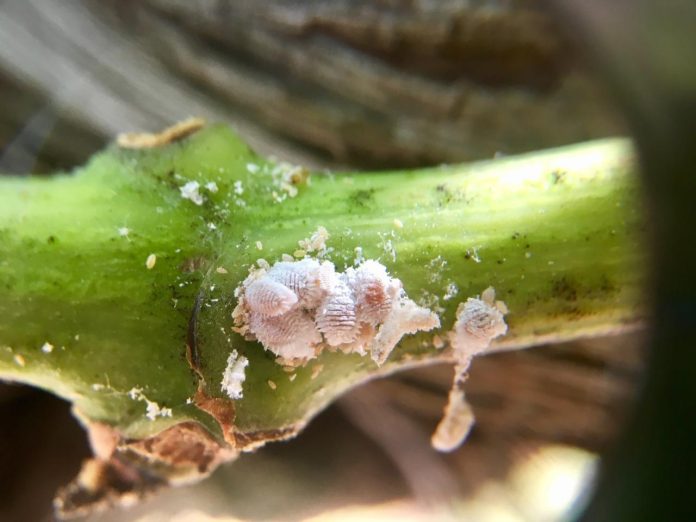

Mealybug management is an important part in controlling grapevine leafroll disease.
At a Fresno State grapevine viruses symposium, Kent Daane, UC Berkeley extension specialist, said systemic insecticides are slow to kill mealybugs, while mealybugs’ ability to transmit the disease occurs at a fast rate.
A case study published in Frontiers in Microbiology noted that control of mealybug and grapevine leafroll disease is among the top priorities in the U.S. wine grape production industry. It is most prevalent in cool climate regions where fruit on infected vines has delayed maturity that results in lower brix, affecting value of the crop.
There are three biological components to grapevine leafroll disease: a complex of viruses, grapevine host plants and species of mealybugs and soft scales that transmit the virus. Symptoms appear in the fall when red grape cultivars display leaf reddening. In white cultivars, there is slight leaf chlorosis. Both red and white cultivars develop downward rolling of leaf margins and phloem disruption.
Vine mealybug (VMB), which is spreading throughout grape growing regions in California, has six to seven generations a year and all stages of overlapping generations are found on canes, clusters and leaves and under bark on trunks and cordons.
Daane said traps are effective in determining if vine mealybug is present in a vineyard. Grape growers can be surprised to find this pest in vineyards since infestations can be difficult to spot. The highest flight rates for VMB are later in the season close to harvest.
Traps can be a good starting point for a concerted regional effort in control of VMB. Asking neighbors to also trap and compare trap counts can help with control decisions.
Grape mealybug is a native pest that has a large complex of natural enemies and is often under good biological control.
Current management strategies for vine and grape mealybug include insecticides, mating disruption, biological control and management of some ant species. The Argentine ant in particular farms the mealybugs and is aggressive in California vineyards, causing a struggle in maintaining a low mealybug population.
Conclusions from studies of mealybug control in major grape-growing regions of the world show a combination of approaches are needed for grapevine leafroll disease. It must be managed on a large scale and a long-term management strategy is necessary. Infected vines or blocks will continue to be a source of infection and the disease will spread in the presence mealybug vectors.
Having a source of certified uninfected propagation materials is also a component of avoiding grapevine viruses.















